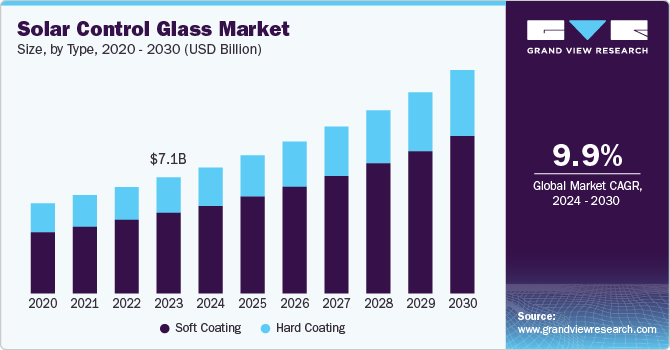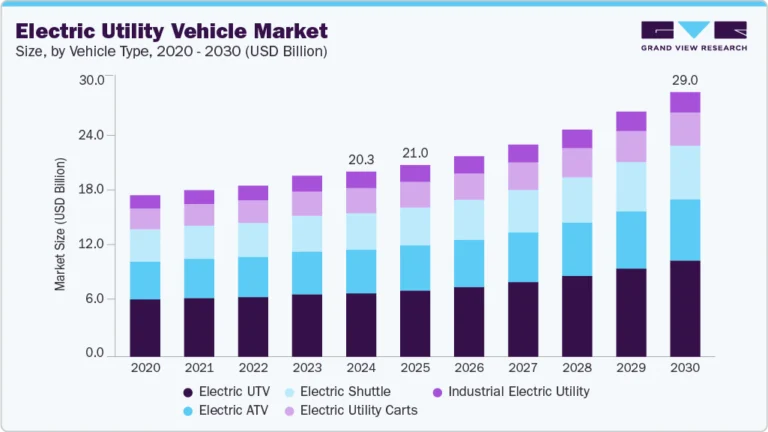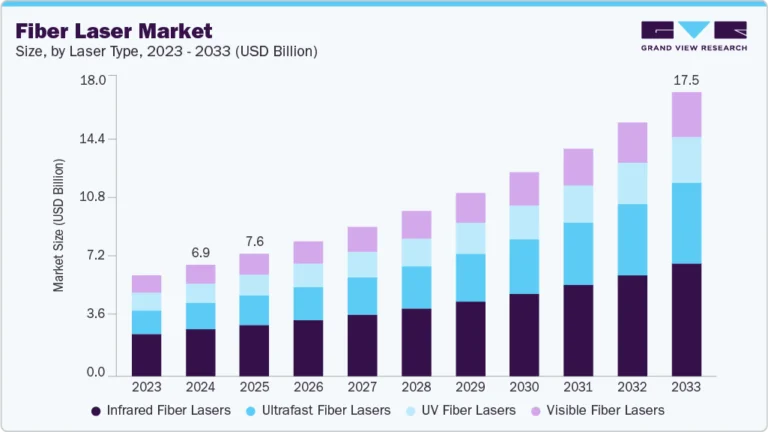Solar Control Glass Market Size, Share & Trends Analysis growing at a CAGR of 9.9% from 2024 to 2030

The global solar control glass market size was valued at 7.11 USD billion in 2023 and is projected to grow at a CAGR of 9.9% from 2024 to 2030. The growth is primarily driven by increasing demand for energy-efficient buildings, growing favorable government initiatives regarding sustainable energy, and rising concerns about climate change and carbon emissions. Multiple commercial building projects and renovation plans of existing infrastructural facilities have been focusing on using solar control glass, which efficiently reduces solar heat gains and assists in the energy efficiency of the entire building. This results in lower utility bills and reduced carbon emissions due to decreased, lessened use of numerous systems such as commercial air conditioners.
Request a free sample copy or view report summary: https://www.grandviewresearch.com/industry-analysis/solar-control-glass/request/rs1
Increasing growth experienced by the commercial construction industry in various countries has increased demand for solar control glass. In addition, residential buildings have also started preferring solar control glass to attain energy efficiency through reduced use of power-driven products such as air conditioners. The ability of solar control glasses to decrease the heat gained inside the premises has provided unparalleled benefits to the users. The product applies to windows and facades, which provide thermal and vision comfort inside the building. Excessive emphasis on energy savings and using natural resources may lead to problematic climates in indoor environments. However, the invention of solar control glass and solar control films has resulted in the availability of practical solutions for this problem in recent years.
Moreover, rising favorable government regulations and incentives are also driving market growth. With growing concerns for climate change and carbon emissions, governments are increasingly seeking ways to reduce their carbon footprint through numerous ways. For instance, the United Nations Net Zero Initiative is signed by more than 140 countries to reduce emissions by 45% by 2030 and achieve net zero by 2050. This includes countries such as India, China, the U.S., and the European Union, which account for a large share of overall carbon emissions worldwide.
Type Insights
The soft coating solar control glass segment dominated the global industry and accounted for revenue share of 69.3% in 2023. The projected growth of this segment is primarily driven by increasing demand for energy-efficient buildings and sustainable solutions. Soft-coated solar control glass is usually preferred in locations where the atmosphere is characterized by extreme to mid-level heat and completely lacks cold weather. Soft-coated solar control glass is more effective than hard-coated solar control glass at reducing heat gains from the sun. This product is extensively used in commercial buildings in countries such as India, Saudi Arabia, China, the U.K., and certain parts of the U.S.
Hard Coating solar control glass is expected to experience a significant CAGR over the forecast period. The durability and scratch resistance capabilities have made this product a preferred choice for high-traffic areas and harsh environments. The growing demand for high-performance glass, intelligent glass applications, and innovative uses like energy-generating glass also contribute to the growth of hard coatings. Hard coatings offer excellent energy efficiency, UV protection, and low maintenance, aligning with global sustainability goals and driving demand among various residential sectors. The product is commonly used where the indoor climate requires a controlled amount of heat owing to extreme cold temperatures outside.






